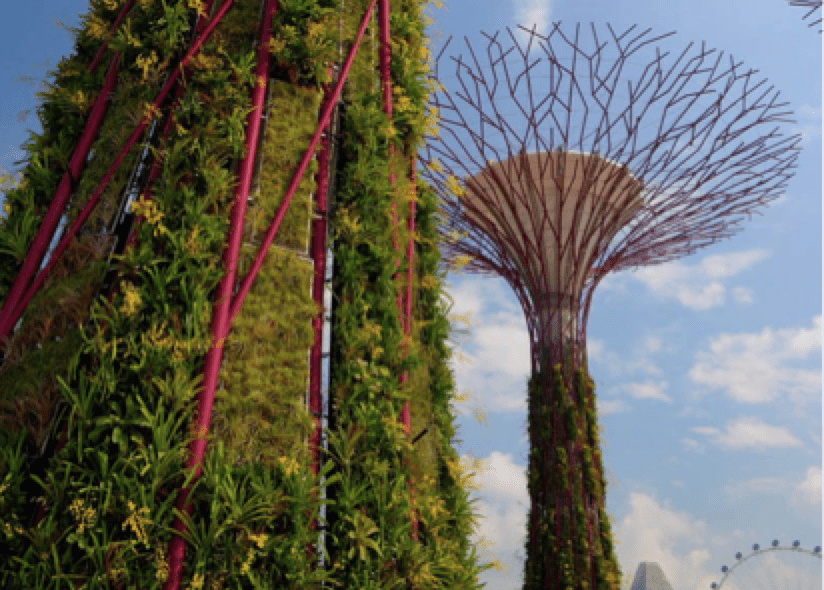
By Cassie Rudolph (GWU, Political Communication, Class of 2020)
Public diplomacy takes many forms, which are constantly shifting and adapting to meet the ends of an evolving world. The emergence of social media, for example, has changed the structure of many public diplomacy strategies and propaganda campaigns root and stem. But while social media may change the way in which messages are spread, other changes are changing its content as well. The concept of eco-diplomacy has emerged as a new form of public diplomacy in the past couple of decades, and it has quickly risen in popularity and importance in global diplomatic relations.
The U.S. Department of State defines eco-diplomacy, or sustainable diplomacy, as “the practice of advancing ecological protection by conducting diplomacy that leverages examples of conserving natural resources, sustainable operations, and effective environmental stewardship.” The idea that sustainability and environmental stewardship could be used as a means of developing foreign relations is still a young concept, very much still being shaped by diplomats working today.
The first consideration of eco-diplomacy as a concept occurred in 1992, when the United Nations held its first-ever Conference on Environment and Development, which focused on sustainable development standards going forward. During the summit, the UN came together to create Agenda 21, a plan of global action focused on environmental stewardship and development for the 178 participating countries. Since then, the CED has met twelve times to determine the way forward for some of the most pressing global environmental matters today.
In the United States, we have seen eras of eco-diplomacy come and go with each Administration. The terms “sustainable diplomacy” and “eco-diplomacy” were first coined by the Department of State under the Obama administration, although President Carter had made environmental relations a foreign policy priority decades before. President Carter’s solar panels were removed from the roof of the White House under the subsequent Reagan administration, and the policy push was also dropped. Similarly, under President Trump, the Administration has downplayed environmental sustainability as a policy value for U.S. diplomacy.
So what exactly does eco-diplomacy look like? That depends on the country involved. Some have taken more traditional diplomatic routes or tried to lead by doing, such as the introduction of the first LEED Platinum U.S. Embassy in 2009, under the Obama Administration. Other states have taken less direct methods to promote eco-diplomacy, with some countries becoming well-known for their advancements in sustainable technologies or conservation efforts.
A quintessential example of eco-diplomacy in the form of eco-tourism— a feature that stands out among the rest in both function and beauty – is located in Kallang, Singapore. Singapore features solar-powered “super-trees”, which reach anywhere from 80 to 160 feet tall, and are in fact not trees at all, but are rather tree-like structures that hold the world’s largest vertical gardens. The trees’ location , called “the Garden by the Bay,” also features the world’s largest glass greenhouse.
, called “the Garden by the Bay,” also features the world’s largest glass greenhouse.
“The Garden by the Bay” has attracted 20 million visitors in the first three years of its opening, and the gardens are only the first chapter of Singapore’s plans to integrate flora and fauna into city life in what officials describe as a transition from “Garden City” to “City in a Garden”.
“The Garden by the Bay” serves as a prime example for the power of public eco-diplomacy. Singapore is famous for being a smaller developing country based on trade and commerce; it has now become a world leader in what the future of city life may look like.
Indeed, it’s entirely possible that we will soon see cities begin to transition into a more symbiotic design with the world around them. A residential building in Milan, It aly, incorporated the idea of “vertical gardens” into the basic designs of their buildings, which helps in mitigating smog, producing oxygen, and creating a potential habitat to reintroduce fauna into the city.
aly, incorporated the idea of “vertical gardens” into the basic designs of their buildings, which helps in mitigating smog, producing oxygen, and creating a potential habitat to reintroduce fauna into the city.
These are just a few examples of ways that countries and individual cities can use eco-diplomacy to change their public reputation to show alignment with the values of environmental stewardship. In the era of imminent global climate change, those who adapt fastest may have significant diplomatic advantages over those that are left in the past. The best path to success in the global competition for “soft power” may be the greenest one.

